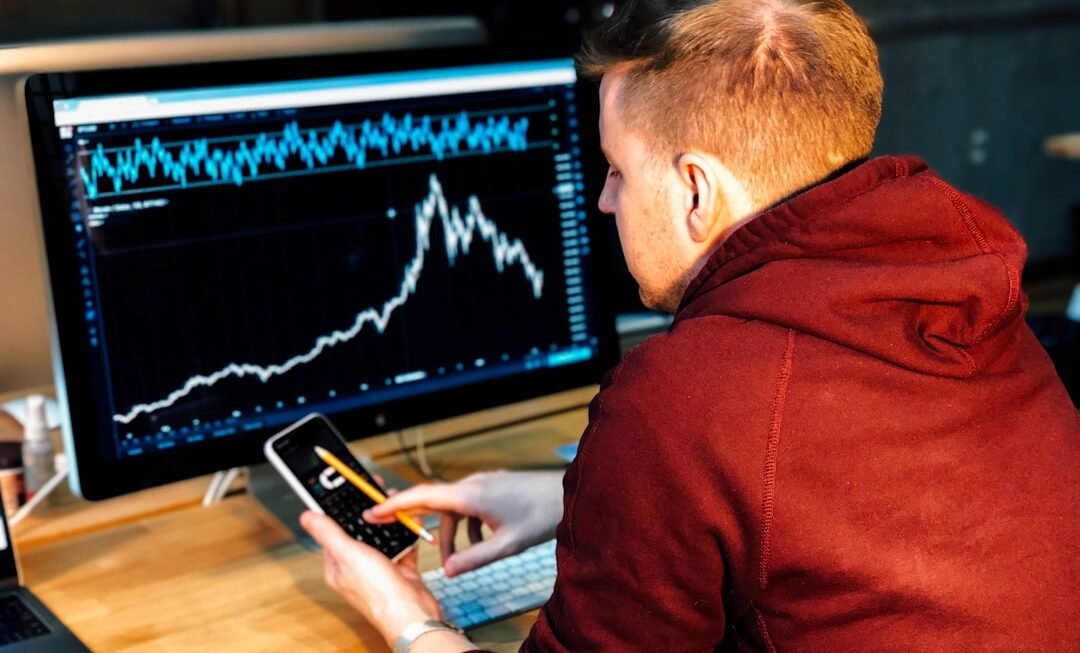Market analysis is a critical component of successful trading. It involves evaluating various factors that can impact the price movements of financial instruments such as stocks, currencies, commodities, and indices. There are two main types of market analysis: fundamental analysis and technical analysis.
Fundamental analysis involves examining economic indicators, company financials, and geopolitical events to determine the intrinsic value of an asset. This type of analysis is essential for long-term investors who are interested in the underlying value of a security. On the other hand, technical analysis focuses on historical price data and trading volume to identify patterns and trends that can help predict future price movements.
Traders who use technical analysis rely on charts and indicators to make informed trading decisions. Both fundamental and technical analysis are important tools for traders, and many successful traders use a combination of both to gain a comprehensive understanding of the market. By understanding market analysis, traders can make more informed decisions and improve their chances of success in the financial markets.
Implementing Advanced Risk Management Techniques
Position Sizing: A Key Risk Management Technique
One advanced risk management technique is position sizing, which involves determining the appropriate amount of capital to allocate to each trade based on the level of risk. By using position sizing, traders can limit their exposure to any single trade and reduce the impact of potential losses on their overall portfolio.
Stop-Loss Orders: Limiting Losses and Emotional Decision-Making
Another advanced risk management technique is using stop-loss orders to automatically exit a trade if the price moves against the trader’s position. Stop-loss orders help traders limit their losses and prevent emotional decision-making during volatile market conditions.
Diversification: Reducing Overall Portfolio Risk
Additionally, diversification is an advanced risk management technique that involves spreading capital across different asset classes and markets to reduce overall portfolio risk. By diversifying their investments, traders can minimize the impact of adverse price movements in any single asset or market. Implementing advanced risk management techniques is essential for traders who want to protect their capital and minimize potential losses.
Utilizing Advanced Trading Tools and Platforms
In today’s fast-paced financial markets, utilizing advanced trading tools and platforms is essential for staying competitive and maximizing trading efficiency. Advanced trading tools such as algorithmic trading software, advanced charting platforms, and real-time market data feeds can provide traders with valuable insights and help them make more informed trading decisions. Algorithmic trading software allows traders to automate their trading strategies and execute trades at optimal times without human intervention.
These advanced tools use complex algorithms to analyze market data and execute trades based on predefined criteria, helping traders capitalize on market opportunities with speed and precision. Advanced charting platforms offer a wide range of technical indicators, drawing tools, and customization options that can help traders analyze market trends and identify potential entry and exit points. These platforms provide a comprehensive view of market dynamics and enable traders to make more accurate predictions about future price movements.
Real-time market data feeds provide traders with up-to-the-second information about market conditions, price quotes, and order book data. By utilizing real-time market data feeds, traders can stay ahead of market trends and make timely decisions that can have a significant impact on their trading performance. Utilizing advanced trading tools and platforms is essential for staying competitive in today’s fast-paced financial markets.
Algorithmic trading software, advanced charting platforms, and real-time market data feeds are just a few examples of advanced tools that can help traders gain a competitive edge and achieve their trading goals. In today’s fast-paced financial markets, utilizing advanced trading tools and platforms is essential for staying competitive and maximizing trading efficiency. Advanced trading tools such as algorithmic trading software, advanced charting platforms, and real-time market data feeds can provide traders with valuable insights and help them make more informed trading decisions.
Algorithmic trading software allows traders to automate their trading strategies and execute trades at optimal times without human intervention. These advanced tools use complex algorithms to analyze market data and execute trades based on predefined criteria, helping traders capitalize on market opportunities with speed and precision. Advanced charting platforms offer a wide range of technical indicators, drawing tools, and customization options that can help traders analyze market trends and identify potential entry and exit points.
These platforms provide a comprehensive view of market dynamics and enable traders to make more accurate predictions about future price movements. Real-time market data feeds provide traders with up-to-the-second information about market conditions, price quotes, and order book data. By utilizing real-time market data feeds, traders can stay ahead of market trends and make timely decisions that can have a significant impact on their trading performance.
Utilizing advanced trading tools and platforms is essential for staying competitive in today’s fast-paced financial markets. Algorithmic trading software, advanced charting platforms, and real-time market data feeds are just a few examples of advanced tools that can help traders gain a competitive edge and achieve their trading goals.
Incorporating Algorithmic Trading Strategies
Algorithmic trading strategies involve using computer algorithms to execute trades based on predefined criteria such as price, volume, or other market indicators. These strategies can help traders capitalize on market opportunities with speed and precision while minimizing emotional decision-making. One common algorithmic trading strategy is trend following, which involves identifying and following established market trends to capitalize on potential price movements.
Trend-following algorithms use technical indicators such as moving averages or momentum oscillators to identify trends and generate buy or sell signals based on predefined criteria. Another popular algorithmic trading strategy is mean reversion, which involves identifying overbought or oversold conditions in the market and executing trades based on the expectation that prices will revert to their mean value. Mean reversion algorithms use statistical measures such as standard deviation or Bollinger Bands to identify potential mean reversion opportunities in the market.
Arbitrage is another algorithmic trading strategy that involves exploiting price discrepancies between different markets or assets to generate profits with minimal risk. Arbitrage algorithms analyze price differentials across multiple markets and execute trades to capitalize on these discrepancies before they are corrected by the market. Incorporating algorithmic trading strategies can help traders capitalize on market opportunities with speed and precision while minimizing emotional decision-making.
Trend following, mean reversion, and arbitrage are just a few examples of algorithmic trading strategies that can help traders achieve their trading goals in today’s fast-paced financial markets. Algorithmic trading strategies involve using computer algorithms to execute trades based on predefined criteria such as price, volume, or other market indicators. These strategies can help traders capitalize on market opportunities with speed and precision while minimizing emotional decision-making.
One common algorithmic trading strategy is trend following, which involves identifying and following established market trends to capitalize on potential price movements. Trend-following algorithms use technical indicators such as moving averages or momentum oscillators to identify trends and generate buy or sell signals based on predefined criteria. Another popular algorithmic trading strategy is mean reversion, which involves identifying overbought or oversold conditions in the market and executing trades based on the expectation that prices will revert to their mean value.
Mean reversion algorithms use statistical measures such as standard deviation or Bollinger Bands to identify potential mean reversion opportunities in the market. Arbitrage is another algorithmic trading strategy that involves exploiting price discrepancies between different markets or assets to generate profits with minimal risk. Arbitrage algorithms analyze price differentials across multiple markets and execute trades to capitalize on these discrepancies before they are corrected by the market.
Incorporating algorithmic trading strategies can help traders capitalize on market opportunities with speed and precision while minimizing emotional decision-making. Trend following, mean reversion, and arbitrage are just a few examples of algorithmic trading strategies that can help traders achieve their trading goals in today’s fast-paced financial markets.
Leveraging Advanced Technical Indicators
Technical indicators are mathematical calculations based on historical price data that can help traders analyze market trends, identify potential entry or exit points, and make more informed trading decisions. Leveraging advanced technical indicators can provide traders with valuable insights into market dynamics and help them improve their trading performance. One advanced technical indicator is the moving average convergence divergence (MACD), which measures the relationship between two moving averages to identify potential changes in trend momentum.
Traders use the MACD to generate buy or sell signals based on crossovers between its components or divergences from price action. Another advanced technical indicator is the relative strength index (RSI), which measures the magnitude of recent price changes to determine overbought or oversold conditions in the market. Traders use the RSI to identify potential trend reversals or confirm existing trends based on its overbought or oversold readings.
Bollinger Bands are another advanced technical indicator that measures volatility by plotting two standard deviations away from a simple moving average. Traders use Bollinger Bands to identify potential overbought or oversold conditions in the market or anticipate potential breakouts based on volatility expansions or contractions. Leveraging advanced technical indicators can provide traders with valuable insights into market dynamics and help them make more informed trading decisions.
The MACD, RSI, Bollinger Bands are just a few examples of advanced technical indicators that can help traders improve their trading performance in today’s dynamic financial markets. Technical indicators are mathematical calculations based on historical price data that can help traders analyze market trends, identify potential entry or exit points, and make more informed trading decisions. Leveraging advanced technical indicators can provide traders with valuable insights into market dynamics and help them improve their trading performance.
One advanced technical indicator is the moving average convergence divergence (MACD), which measures the relationship between two moving averages to identify potential changes in trend momentum. Traders use the MACD to generate buy or sell signals based on crossovers between its components or divergences from price action. Another advanced technical indicator is the relative strength index (RSI), which measures the magnitude of recent price changes to determine overbought or oversold conditions in the market.
Traders use the RSI to identify potential trend reversals or confirm existing trends based on its overbought or oversold readings. Bollinger Bands are another advanced technical indicator that measures volatility by plotting two standard deviations away from a simple moving average. Traders use Bollinger Bands to identify potential overbought or oversold conditions in the market or anticipate potential breakouts based on volatility expansions or contractions.
Leveraging advanced technical indicators can provide traders with valuable insights into market dynamics and help them make more informed trading decisions. The MACD, RSI, Bollinger Bands are just a few examples of advanced technical indicators that can help traders improve their trading performance in today’s dynamic financial markets.
Developing a Robust Trading Plan
Defining Goals and Objectives
A robust trading plan should clearly define a trader’s goals and objectives in the financial markets. Whether it’s achieving a certain level of profitability, building a diversified portfolio, or mastering a specific trading strategy, having clear goals can provide direction and motivation for a trader’s activities.
Risk Management Rules
Risk management rules are another crucial component of a robust trading plan. These rules should outline how much capital a trader is willing to risk on each trade, how they will use stop-loss orders to limit potential losses, and how they will diversify their investments to minimize overall portfolio risk.
Trading Strategy and Discipline
A robust trading plan should also include a detailed trading strategy that outlines how a trader will identify potential opportunities in the market, execute trades based on predefined criteria, manage open positions, and exit trades at optimal times. Having a clear trading strategy can help traders make more informed decisions and avoid emotional decision-making during volatile market conditions.












